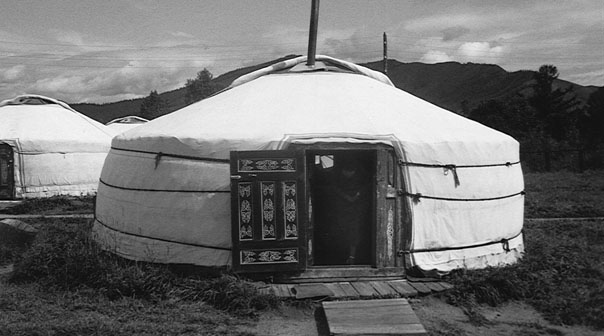| This Web book is based on public domain material provided by the US government and is available in several versions. See the editorial for more information. |

|

Home  The Society and Its Environment The Society and Its Environment  Society Society  Pastoral Nomadism Pastoral Nomadism  Pastoralism as a Cultural System Pastoralism as a Cultural System |
|||
| See also: Pastoral Nomadism, Pastoralism in Practice | |||






|
|||
Pastoralism as a Cultural System
Mongolian society and culture developed in interaction with, and in conscious opposition to, that of settled agriculturalists, most of them Chinese. Along the ill-defined Inner Asian frontier between the lands with sufficient rainfall and warm weather to support agriculture and the grasslands most effectively exploited by pastoralists, people and cultural elements for centuries have moved in both directions, with some agriculturalists abandoning their marginal farms and becoming herders, and with some herders settling down either as dominant overlords or as laborers. Superimposed on the gradation and shading that are characteristic of frontier cultural and biological systems is a cultural system of ethnic groups that exaggerates distinctions and denies commonalities.
Much of Mongolian traditional culture thus goes beyond the objective, technical demands of pastoral life to a conscious glorification of the values of nomadism and a disparagement of practices associated with settlement in general and with Chinese culture in particular. Traditionally, Mongols not only preferred a diet of meat and milk, but they despised, and refused to eat, vegetables, justifying this with a proverb, "Meat for men, leaves for animals." Although Mongolian lakes and rivers are full of fish, traditionally Mongols did not eat fish. Mongols disdained the sort of regular, patient toil practiced by Chinese farmers or traders, and scorned any work that could not be performed from horseback. Such values and attitudes have presented severe obstacles to efforts to modernize Mongolian society.
|
|||
Home  The Society and Its Environment The Society and Its Environment  Society Society  Pastoral Nomadism Pastoral Nomadism  Pastoralism as a Cultural System Pastoralism as a Cultural System |
|||
Last Update: 2010-12-07


